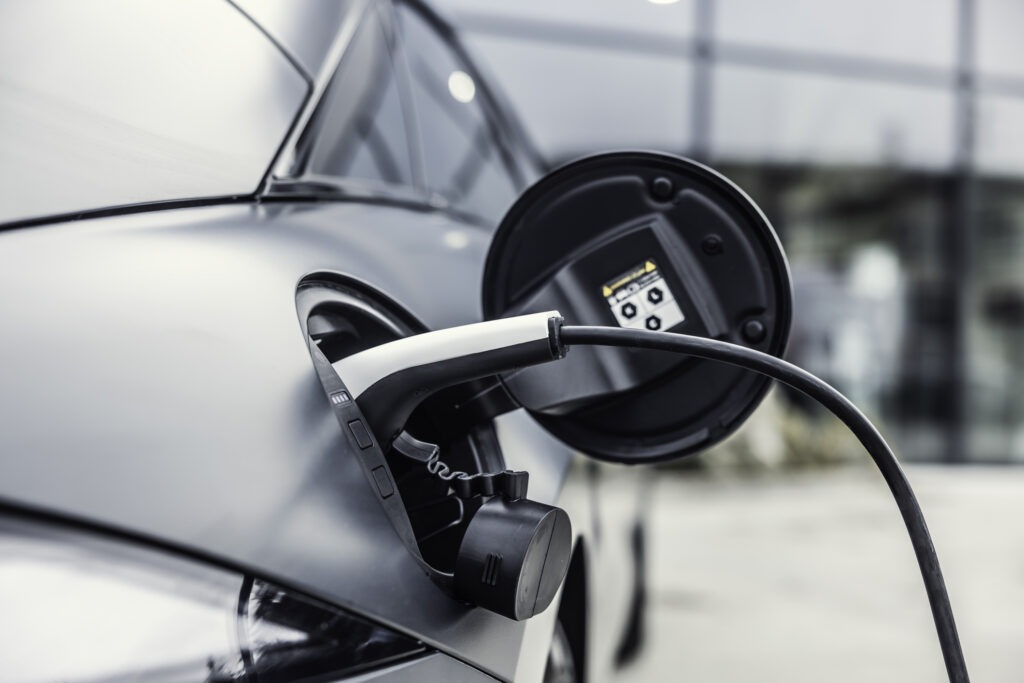Which EVs led the Chinese market in July?
13 September 2024

Electric vehicles (EVs) saw strong growth in China during July, but which models were the most popular? José Pontes, data director at EV Volumes, analyses the market with Autovista24 editor Tom Geggus.
A total of 887,255 EVs were sold in China in July, up 33% year on year. Plug-in hybrids (PHEVs) were responsible for most of this growth, recording around 419,000 sales. The powertrain saw sales jump by 87% compared to July 2023.
Meanwhile, at 468,000 units battery-electric vehicles (BEVs) recorded a sales increase of only 6%. This was the second consecutive month of single-digit growth for the powertrain.
In total, EVs accounted for 51.4% of all new-car sales in China during July. BEVs alone accounted for 27% of the country’s overall total, and 53% of plug-in sales. This fell below the average of 58% recorded in the first seven months of the year.
The performance of PHEVs highlights rising popularity in China. Buyers selecting PHEVs are not adopters, but are instead the ‘early majority’, illustrating the powertrain’s potential to convince more buyers to step into an electric vehicle.
In the first seven months of 2024, EV sales totalled almost 5.2 million units. This was a significant jump from the 3.9 million recorded at the same point last year. Between January and July, EVs made up 45% of all new-car sales. Plug-in powertrains can be expected to make up around half of the overall new-car market by the end of 2024.
EV versus ICE
The top-seven best-selling cars in China during July were EVs. The best-selling internal-combustion engine (ICE) model was the Volkswagen (VW) Lavida in eighth with some 24,000 units. The next most-popular ICE model was the Nissan Sylphy in 10th.
However, both models saw significant drops in sales. Deliveries of the Lavida fell by 16% year on year, while the Sylphy performed even worse, dropping 27% compared to July 2023.
Out of the eight EVs in the overall top 10, six belonged to BYD. The carmaker has cut prices on its electric models to challenge the ICE market and bring buyers to the brand. This, however, is not only putting pressure on petrol and diesel powertrains, but also over EV models.
Plug-in models claimed the top-three places across almost all passenger-car segments, with the exception of the compact category.
BYD was ahead in three vehicle categories, including the C-segment, where the Yuan Plus took first place. The upcoming Seal 06 GT will likely advance the EV share in this area as well. The brand lost the lead in the B-segment to the Wuling Bingo, which benefitted from BYD’s internal competition between the Dolphin and the Yuan Up.
The full-size category provided a surprise in July, with the Aito M9 beating the BYD Han by some 100 units. A close race between the two can be expected in the coming months. Meanwhile, the Aito M7 claimed third, meaning the category was led by three domestic EVs.
BYD Song leads growing market
There were seven BYD models in the top 10 in July, with three more just below. The BYD Song was the uncontested leader of the Chinese EV market in July. The midsize SUV recorded 52,642 registrations, with just 3,873 units belonging to the BEV version, highlighting the performance of PHEVs in the month.
The model’s continuing success will depend on its competition, particularly from within BYD. The Song could soon be facing off against the Song L, Sea Lion and the Denza N7.
This is a lot of competition from inside BYD’s midsize SUV portfolio for the Song to keep producing around 50,000 sales a month. That figure is a necessary threshold for models wanting to lead the Chinese market. But thanks to its recent price cuts, the Song is well placed to continue its success.
Another cornerstone of the BYD stable is the Qin Plus. The midsize sedan recorded 39,710 registrations in July, placing it second in the EV chart. A total of 10,636 units belonged to the BEV version. With prices starting at ¥80,000 (€10,163), demand is likely to stay high, at the cost of both EV and ICE competitors.
In third, the Tesla Model Y saw 36,299 sales in July. The BEV is keeping the US carmaker relevant in the Chinese market. This is no small feat considering that it was the only foreign model in the market’s top twenty in the month. Meanwhile, the Tesla Model 3 also had a good month, with 9,928 sales, although it failed to make the top 20.
Dominant performance
The BYD Seagull secured fourth place in the month with 34,789 registrations. With some production diverted to export markets, demand appears to have stabilised at around 35,000 units a month in China. The small EV now has a regular spot in the country’s top five EV list.
Even with the model’s attention diverted to other regions, such as Latin America and the Asia-Pacific, the Seagull is likely to remain in China’s top 10.
In its second full month on the market, the BYD Qin L took fifth place with 32,466 sales. The new sedan can almost be thought of as the third-generation of the Qin.
Combined, the Qin Plus and the Qin L, together with the Seal 06 and Destroyer 05 (which can both be considered as alternative trim lines of the Qin L and Qin Plus, respectively), recorded 112,528 sales in July. This is more than double the result of the first-place BYD Song.
The BYD Han finished in 11th, the Dolphin in 18th and the Tang in 19th. This means BYD models made up half of the top-20 table.
This is happening as the carmaker is set to introduce several new potential best-sellers into the market. While this does increase the risk of cannibalisation for existing BYD models, these newcomers will also likely take sales from the brand’s competitors.
Rising models
Elsewhere in the table, the Li Auto L6 finished in seventh. The model saw 24,856 deliveries in only its fourth month on the market, and could reach the top five soon. Another EV on the rise is the Aito M9, which finished 10th in July with a record 17,151 deliveries. A total of 1,203 sales came from the BEV version, again highlighting the performance of PHEVs. The Wuling Bingo recorded 14,536 deliveries, a new best in 2024.
Outside the top 20, Changan’s UNI-Z PHEV reached a record 7,681 sales. Then, Chery’s Fengyun T9 PHEV crossover hit 8,309 registrations in July. This is an impressive result in only its third month on the market.
Leapmotor’s C10 reached a record 7,386 units, while its older and larger sibling, the C11, recorded 6,811 sales, a new best this year. Hozon saw its Neta L midsize SUV achieve 5,628 sales in only its fourth month on the market. Meanwhile, Nio saw its ES6 best-seller reach 8,112 units, its best result in 11 months.
The Geely Galaxy L6 hit a record of 6,424 registrations in July. Its crossover sibling, the L7, also shined with 6,559 deliveries, its best result since January. The Lynk & Co 07 sedan hit 6,001 registrations in its third month on the market, making it the brand’s best-selling model. Finally, the VW ID.3, reached a year-best score of 8,282 sales.
A secure lead
Between January and July, the BYD Song, the BYD Qin Plus, and the Tesla Model 3 all appeared secure in their top three positions. The same can be said about the fourth-place BYD Seagull, which It managed to put some distance between itself and its competitors. More than 60,000 units now separate it from the fifth-place BYD Yuan Plus.
The BYD Destroyer 05 surpassed the Aito M7 to take sixth. This meant that five BYDs occupied the top six spots between January and July. Then, the Wuling Bingo profited from a good July to climb one position, to 11th. Lower down the table, the Aito M9 had another positive month, climbing to 15th.




